
Boating New Zealand, June 2000

Captain Asparagus goes AWOL
Big balls in Napier
In the January issue I wrote about a system for enhancing the fishing around the coastline - planting artificial reefs called reefballs.
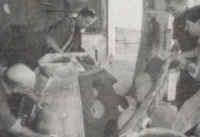
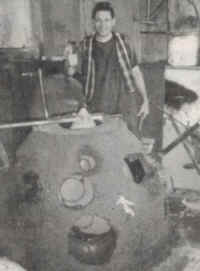
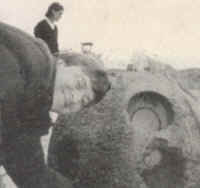
ALL PICTURES: Making mud pies: the outer mud is removed while the inner inflatable mould remains to help with floatation.
The first I heard of the repercussions was a call from a guy called Dave from
Napier, waxing enthusiastically about reefballs, and blaming me for the whole thing.
It seems a group of Napieronian greenies and divers had formed Reef Balls New Zealand and had even bought some moulds for making reefballs, and had them en-route from America.
Before long, an e-group site was set up - a multi-party group on the Internet for people from Golden Bay in the south to Whangarei in the north to
coordinate things reefballery.
In March, things really started moving and shaking. With a degree of coordination from Florida, home of Todd Barber, CEO of Reefballs, a Dutch film crew was dispatched to Napier to film the deployments of our first reefballs. Todd would to fly out at the same time, and I was invited to have a look, too. Cool!
I met Todd at Auckland International Airport and took him to visit Kelly Tarlton's Underwater World so Todd could see what sort of fish we have in NZ.
Next, we headed for Napier in foul weather and five hours later, after dark and in the pouring rain, arrived to a warm welcome at Murray Bond's place in Napier, where Todd was to be based. Dave Head, my telephone contact,
along with Dave Allison and Murray are the main Reefballs team there, and we were soon deeply into plans for our lumps of concrete.
Next morning, still slightly jet-lagged, poor old Todd was dragged down to the local Firths Depot to help us make the first NZ reefball. We were all keen so were not too upset that the first attempts kinda collapsed. It's all a learning curve, huh? Next day we had another shot at pouring concrete and assembling the moulds and this time, it worked.
Next day, our Dutch film crew arrived, and the fun really started. You know, a seven-minute segment on their show, Jules Unlimited, the Dutch equivalent of Beyond 2000, took two full-on days of filming, re-filming and re-refilming.
The idea was to have Todd and the show's talent - that is TV talk for presenter, a nice bloke called Menno
Bentveld - go through all the stages of building a reefball. To keep everything in
sequence, we had to schlep around one of our pre-made reefballs from scene to scene. With five guys staggering around in soft gravel, it was by no means an easy job.
It is good to know only one person had a reefball dropped on him, although
I would have been happier had it not been me. Ow. Owowowow. Toyota. I used this as an obvious excuse to get out of lugging the 150kg ball of concrete around at the whim of the director, who called for re-take after re-take.
Finally, we had the reefballs made, set and ready to get wet, all we had to do was get them to the water.
I admit it was my idea to drive the Pajero onto the beach so we didn't have to roll the balls down the sharp incline. It would have been a
darn good shot too, except I forgot that although I had wide tyres and four-wheel drive, the
trailer didn't, and it had more than 400kg on it to help turn it into an efficient
sand-anchor. We got about 3m onto the beach before the axles of the trailer bit the dirt, followed shortly by the Pajero. Oops. Bugger.
Seeing we were pretty well firmly embedded in the beach gravel still didn't stop the director asking for a re-take not a runner, I am afraid. We were well parked. Rolling the two reefballs off the trailer was easy. Well, it was so much closer to the ground, wasn't it? Still, even with the five of us lifting them off well, eight takes was a bit of an ask, is all I can say.
Now all we had to do was roll them to the water. Easy huh? So, down the slope we go, and guess who got lumbered with being the charlie on the down-slope side of the ball. Sigh, yep, muggins. I'd already had one dropped on me, now
I was lined up to be steam rollered too.
We got the ball to the water safely and I stood up slowly, with my back to the sea, only to notice my mates quickly retreating up the beach. One and one takes a while to add up sometimes, so the wave beat me. Thanks, guys.
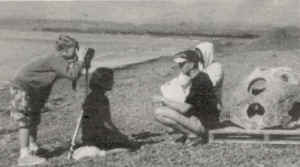
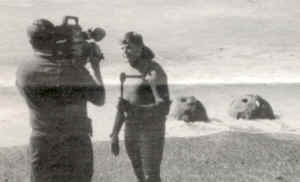

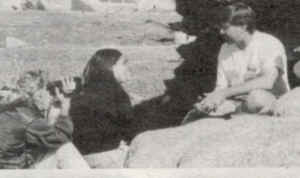
ALL PICTURES: Take one: Launching the reef balls was a combination of team work, enthusiasm and a chance to grab 15 minutes of fame.
Standing there, saturated and not a little displeased, I was immediately voted as just the guy to make sure the reefballs didn't float off in the waves.
Ahhh, you are thinking, how could 150kg of concrete float? Well, to ease placement at sea, you leave the internal bladder, a large polyform buoy, fully inflated. Believe it or not, in water, they were marginally buoyant, and needed to be held in place while Menno, Todd and the cameramen got into their wet-suits.
So, there I was, up to my chin in cold water, thinking how lucky I was to be so well cold-adapted - like whales and walruses trying to stop 150kg balls of concrete bouncing on my toes in the incoming tide.
Soon the waiting tow-boat and camera boat came in to pick up the crew and reefballs and off they all toddled to drop their balls offshore. Lucky me, I got to slosh back to dig out the Pajero.
It took them another three hours of getting Todd and Menno to climb in and out of the water to get the right scenes.
Even worse, they had nil viz underwater to do any filming, after five inches of rain three days earlier but they have heaps of footage from elsewhere to cut in to the tale, so it was not a total disaster.
One feature of reefballs is that no two sites are the same. Around the tropics, you want a rough texture on the reefball to help corals grow. In New Zealand, we have few corals, so a smoother surface would likely be better, especially as we hope to have these as habitats for paua, which prefer smoother surfaces to move over. Moulding holes under the balls also allows for colonisation by crayfish.
People out there rave on about sinking ships to create
reefs. Todd has heard this all before, and cannot believe people still buy
this nonsense. A sunken ship is not a substitute for a natural reef, it is
merely a FAD, or fish aggregation device. They are no more ecologically sound as reefs than parking a Kenworth in a
forest as a home for birds.
A FAD, be it a sunken ship, a pile of tyres or even a heap of concrete pipes, which in Todd's view are a distant, but still greatly favoured second best to reefballs, do not have the habitat to support fish. The FAD of a ship will attract fish but they do not have the ecology to form a food chain, which means the fish found there tend to not only grow slower, but be of poorer condition than fish from natural reefs.
A sunken ship is, according to Todd, little more than a Disneyland ride for divers, which is fine, if you go into the deal understanding this, but not if you are trying to sell the idea as an ecologically sound practice. If this rankles, just think of the ships sunk in WW2 around the Pacific. Most are still very visible, diveable wrecks, easily recognisable down to the cables and guns.
If these had been constructed of pH neutral concrete such as reefballs, they would be totally buried and unrecognisable. Check out the evidence on the Reefballs
site: www.reefball.com.
The one artificial reef system now encouraged in the US is reefballs. No other system is sanctioned for long term use. The old
idea of plonking piles of used tyres on the seabed has also proven to be a bigger pollution threat than benefit. Aside from their instability, (when the wires holding them together inevitably rust, they spread everywhere), tyres can remain in the water for years with minimal marine colonisation. Again, concrete, a far more natural brew,
would be infinitely, preferable.
A reefball reef is also an excellent, long term, ecologically sound
breakwater and beach retention system.
Research has found that laying a reefball reef parallel to a beach, just beyond the normal surf zone, will actually build up the amount of sand on a beach. This is opposed to the old idea of building a groyne to do this job. By having a row of balls just offshore, you do not prevent waves from washing in
to the shore, which is good, because we all like having waves to swim in, eh, and also because it is these
incoming waves that carry sand in to the beach.
The reefballs prevent the backwash off the beach from carrying
the sand out again, especially in storms, when most damage is done. Of course, there is also the major benefit of creating an excellent fish-holding reef along the beach, a boon to surfcasters for sure.
I recommend that anyone interested in preventing beachfront erosion seriously look at reefballs. Whitianga Beach needs these, I hear, so does the back of Matakana Island in the Tauranga Harbour. In Napier, there is considerable excitement among residents of Westshore Beach who are having major erosion problems on their beaches. I bet you dollars for donuts that there are a lot more places in NZ where we could use this great concept.
Overseas, some reefballs are used as fish homes under wharves, stacked with a pile driven through the middle to create vertical reefs.
In Malaysia, the reefballs are being used to not only restore battered reefs, but also to prevent inshore trawling, helping the recovery of fish stocks. In the Philippine Islands over the next few years, no fewer than a million reefballs are scheduled to be deployed to rebuild reefs annihilated by years of dynamite
fishing.
Governments and large corporations are deploying reefball reefs world wide as "Mitigation" reefs... where a government who wants to close off reefs for reserves, will create new ones for local fishermen, often in handier, safer locations.